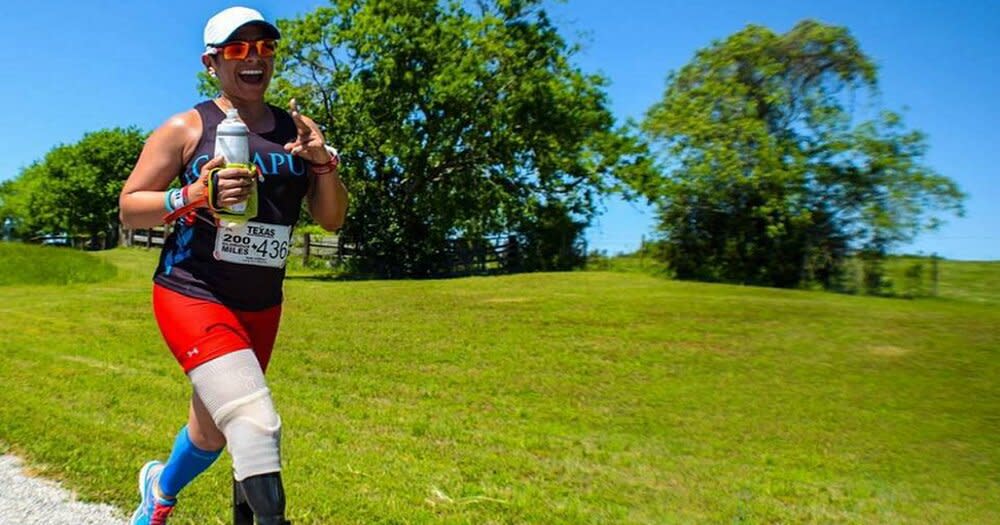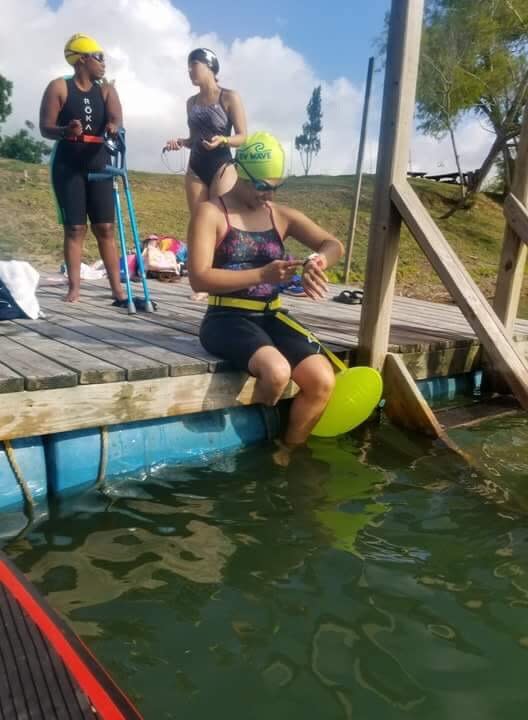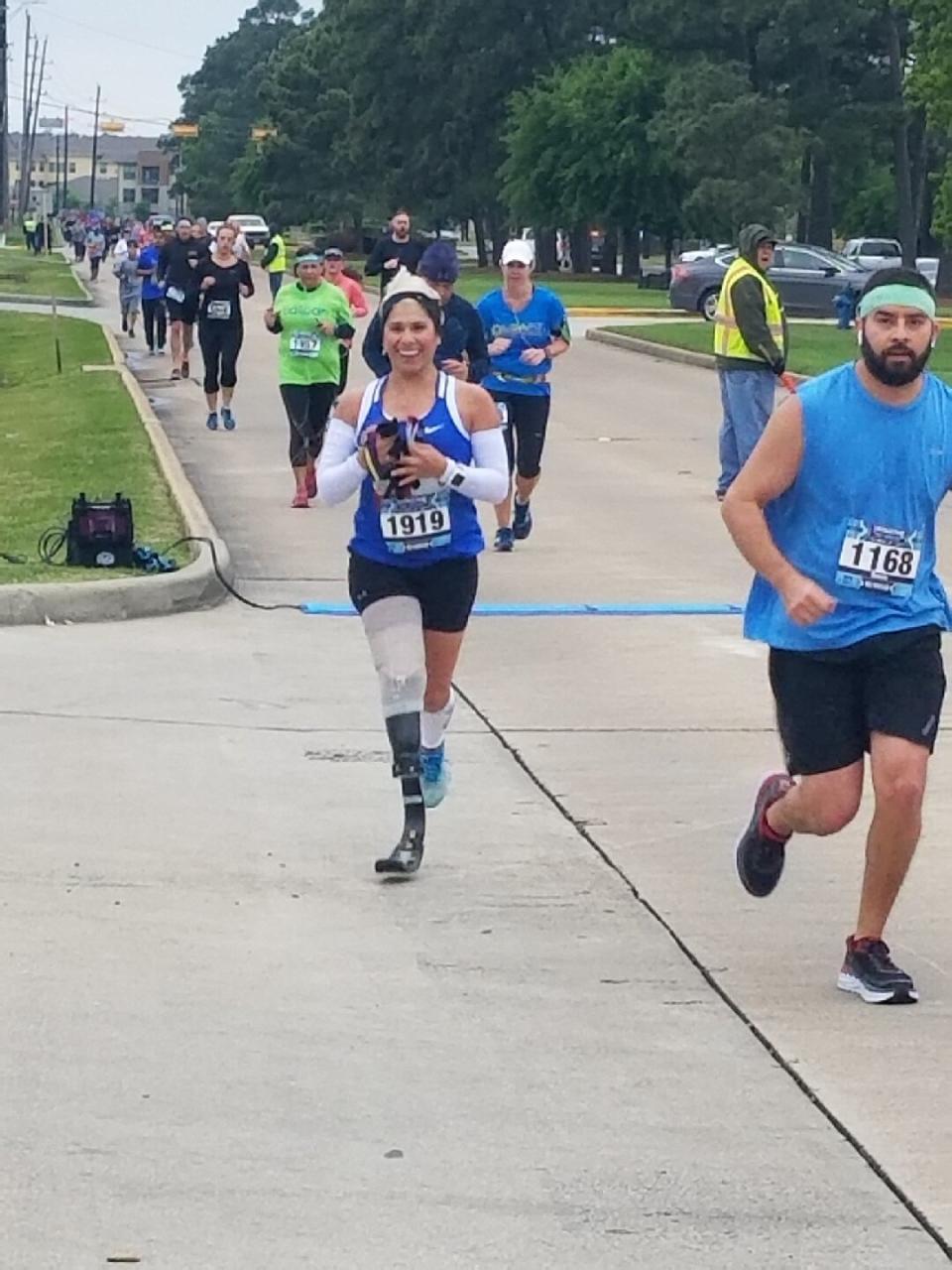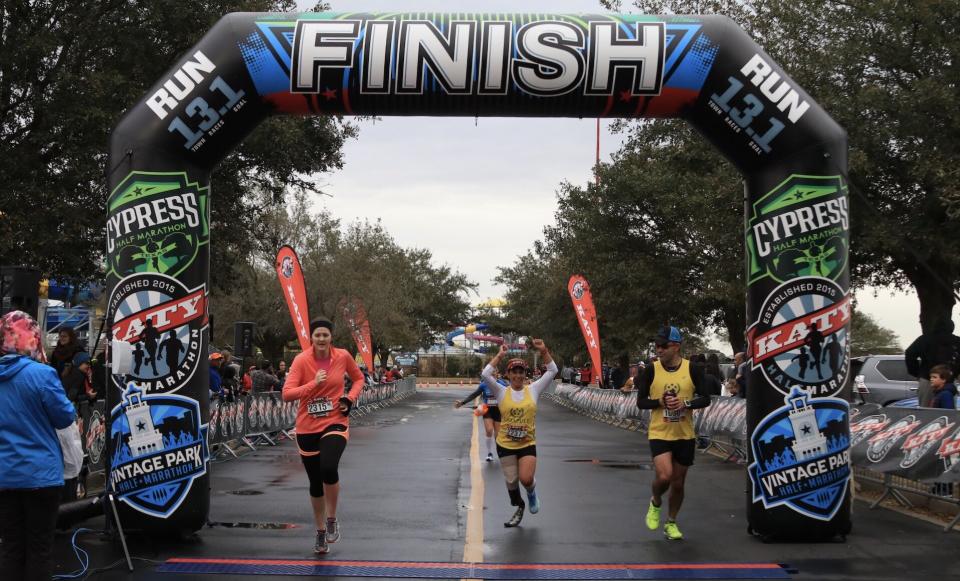How Running Helped This Cancer Survivor Embrace Her Amputation

Photo: Alma Faz
It was 1993, and I was fourteen years old when I first felt pain in my right ankle. I went to the doctor, and they sent me home with some ibuprofen and told me that I must be experiencing growing pains. The pain, however, never went away.
It wasn't enough of a cause for concern, though, until my senior year of high school, when there was a noticeable bump on my leg and I found it near impossible to walk. My parents felt that I needed to see some sort of specialist, so we ditched my family doctor in an effort to find answers.
A Shocking Diagnosis
It turned out, the specialist I needed was at MD Anderson Cancer Center in Houston. In October 1997, at 19 years old, I was diagnosed with bone cancer. Within a moment, I went from being a normal teenager-whose main concern was school and her friends-to fighting for my life and not knowing what would happen next.
Shortly after hearing the news, my leg was put in a cast while doctors started running more tests, one of which showed a mass in my abdomen. After a biopsy, I was told that I also had stage 3 ovarian cancer. Immediately, the focus moved from my leg to my abdomen. In November of that year, I had surgery to remove all the cancerous tumors from my abdomen, then I started chemo for both cancers.
After three rounds of chemo, we were able to defeat most of the cancer in my abdomen, but the cancer in my leg was stubborn and kept growing. At this point, I had whithered down to about 85 pounds. My doctors broke the news that it would be in the best interest of my health to amputate my leg. (Related: What I Learned About Celebrating Little Wins After Getting Run Over By a Truck)
Hearing that news as a young adult was overwhelming, to say the least. Over the course of a few months, my health had already become such a priority that I was no longer able to live the rest of my life. I was forced to drop out of college in the middle of my first semester, and now with my leg being taken away, I thought I'd have to stop doing all the things that I loved: running, rollerblading, cheerleading. Most of all, I knew that losing my leg was going to make me different than everyone else-and that's what truly scared me.
I remember one of the doctors told me: "You are going to be able to do everything you want in life," he said. "This is just something we need to do to save your life."

Photo: Alma Faz
I latched onto those words and promised myself that I would live by them. When I woke up from surgery and it was those words that helped me realize that, even though I lost my leg, now I had the opportunity to become healthy and start living my life again.
The Road to Recovery
In September 1998, I took my first steps with the prosthetics since having my leg amputated. While that was a huge accomplishment, it took a decade before I felt normal enough to live my life again. Losing my mobility and learning how to navigate the world as an amputee took a huge toll on my emotional health, and I struggled with depression for quite some time. (Related: I Lost My Leg to Cancer-Then Became an Amputee Model)
Prosthetics were also not as advanced as they are now, so it was difficult just function day to day. Since I couldn't be as active as I wanted to be, I decided to focus my efforts on building my career. I went back to school to study radiology-something that had fascinated me since I started going through cancer treatments as a kid. After finishing school, I started working as a radiologist at the MD Anderson Cancer Center, the same place where I had my surgeries and treatment.
I knew I wanted to dedicate my time to helping young cancer patients like myself, so I also started serving on MD Anderson's Young Adult Advisory Council to help kids manage the milestones and challenges that come with having cancer at such a pivotal time in life.
But in order to truly devote my life to giving back to the cancer community at the cancer center, I had to make good on the promises I made while on the council: I was telling these young patients that they could do everything they wanted to and more, yet I wasn't living that way. I still wasn't where I needed to be physically, and I was still struggling to feel completely "normal."
Finding Empowerment Through Exercise
In the back of my mind, I knew that I had to learn to be active again if I wanted the chance to maintain good health for the rest of my life. As I approached my 30th birthday, I found a better prosthetic leg that gave me more mobility. Shortly after, I hired a personal trainer and started working on rebuilding some of my strength. (Related: I'm an Amputee and Trainer-But Didn't Step Foot In the Gym Till I Was 36)

Photo: Alma Faz
While getting my body moving was tough at first, I quickly realized that it wasn't just about building physical strength: Every time I was able to lift a heavier weight or do an extra push-up, I felt empowered. Before I knew it, I could do a lot more than log some hours in the gym; I started kayaking, rock climbing, and hiking, partly in an effort to prove to myself that I could indeed to anything, and partly to show my patients that-amputee or not-a happy, healthy life is possible after cancer.
By the time 2010 rolled around, I felt physically and emotionally ready to push myself out of my comfort zone. It had been a decade since my surgery, and I felt like I needed to set a new goal. So I decided that I was going to start running again. That same year, I was fitted with a new running prosthetic and, in 2011, I began running longer distances. With every extra mile I logged, I came to realize that I was a very capable person and could do anything I set my mind to.
In 2012, I ran my first half marathon-and that was just the beginning. To date, I've participated in 21 half-marathons and one full marathon, three 200-mile relay races, and have logged more than 1,100 miles in just the last two years. (P.S. The next time you want to give up, remember this 75-year-old woman who did an Ironman)

Photo: Alma Faz
On top of reassuring me of my physical capabilities, running has done wonders for my mental health, helping me regain my self-esteem. Before I found running, I still had that feeling of being different. I was self-conscious about my prosthetic and didn't want anyone to see it. Now, I've stopped caring about how my prosthetic looks. It's allowed me to do what I loved most and that's what truly matters. Now, I wear shorts, opened toed-shoes, dresses, and skirts without thinking about it twice. I finally feel like my recovery-both physical and mental-is complete. I've embraced my new self and am more proud of my prosthetic than I ever thought I'd be. Yes, it took nearly a decade to get there, but I'm not sure if I ever would have made it to that point without running. (Related: Meet the First Amputee to Complete the World Marathon Challenge)
Looking ahead, I have my sights set on competing in a half Ironman-and it's an amazing feeling knowing that I'm 100-percent capable of making it across the finish line. It's taken a lot for me (physically and emotionally) to get to this point and I hope it serves as a reminder for people to not take their bodies for granted. Exercise-and more importantly, developing a strong mind-body connection-is so pivotal to living a happy and healthy life. The ability to harbor that connection is not promised to you, so it's something every single person should cherish deeply.

